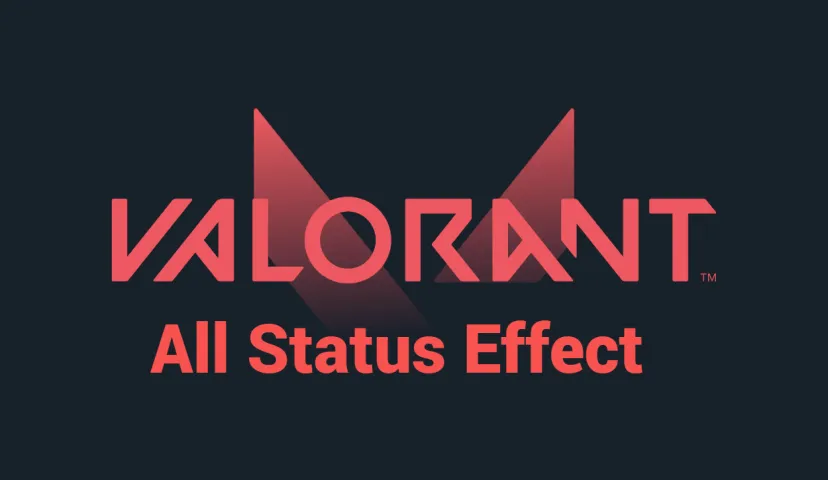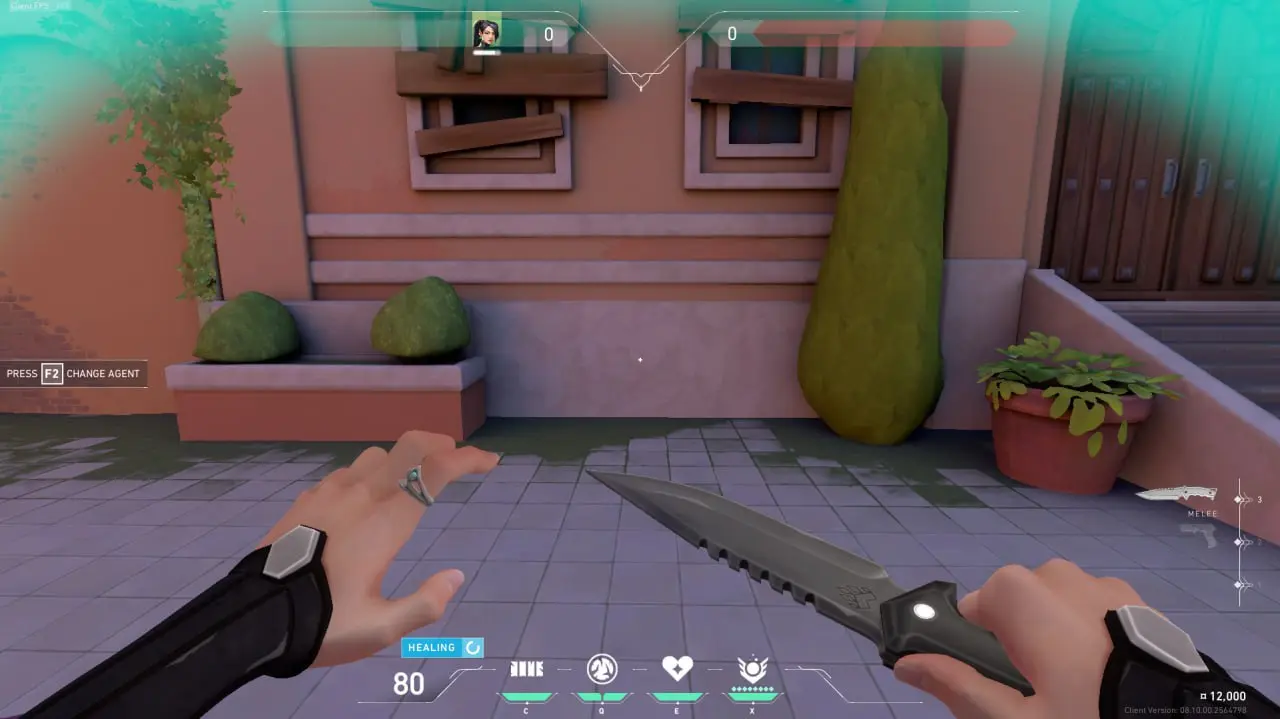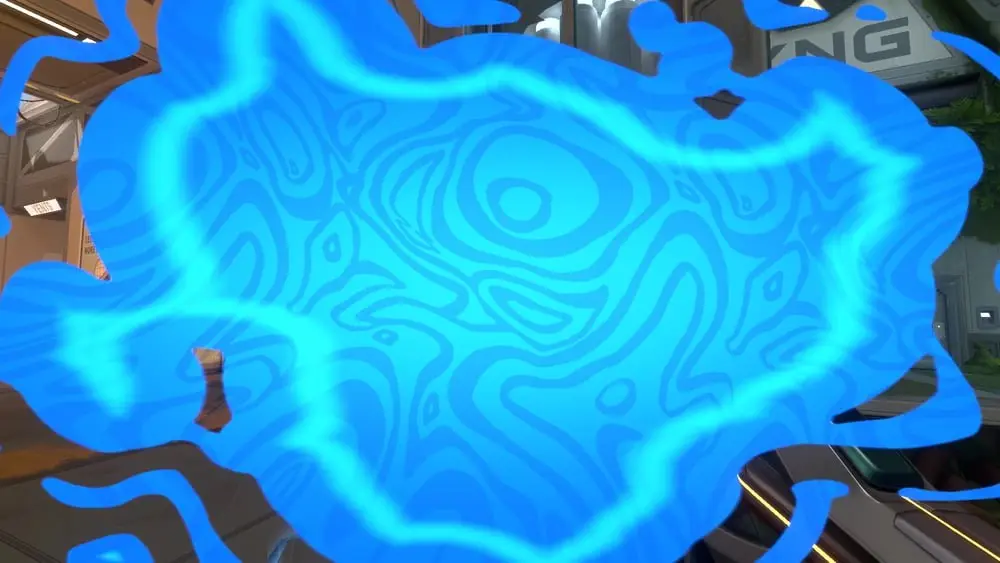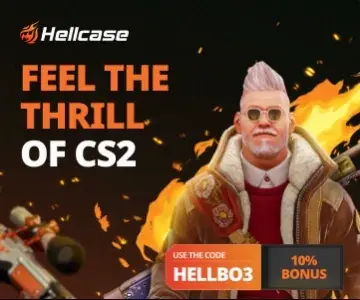
The term status effect is familiar to only a small portion of gamers because it is most often used in MMO/MMORPG and MOBA projects. Although the shooter from Riot Games does not belong to these genres, it has its own features. Valorant stands out from most of its competitors due to the presence of skills. Each of the 25 agents has 4 unique abilities, some of which can damage, slow down enemies, blind them, and also apply positive effects to themselves and their allies. Today, the Bo3 editorial team has prepared material for you about the term status effect in Valorant, which abilities apply it, and what negative and positive effects result from it.
What is a status effect in Valorant?
As understood from the information mentioned above, a status effect is an effect that can be applied to characters in Valorant through various abilities. Status effects are divided into two types, negative and positive. Positive effects, or buffs as called in the gaming community, can be applied to allies, resulting in certain enhancements. Positive effects include healing and combat stim. Negative effects, or debuffs, can be applied to enemies, but in some cases, they can also affect your allies. Negative effects include blindness, which can be applied in three different ways as we will discuss later, concuss, deafen, decay, detain, cocoon, and mark (exclusively available to certain agents), reveal, slow, suppress, tether, and vulnerable. As it will become clear, there are significantly more negative effects in the game, which directly correlates with the main goal of any shooter, primarily to eliminate enemies.
Positive Status Effects in Valorant
Positive effects, or buffs, are available to only a few agents out of the total, and such characters are usually valued in matches because they can effectively not only eliminate the enemy but also assist allies. Below we discuss all buffs in Valorant and the agents that use them.

Heal
The first and one of the most important positive effects is healing. Using this effect, you can heal yourself or your allies, giving you an advantage during the match. Despite being a very useful ability, in Valorant, only a few agents can heal themselves or their allies, and the agent who can choose whom to heal is only one. Agents who can heal themselves include Phoenix and Reyna. The former regenerates his HP using the abilities Blaze and Hot Hands, which damage enemies but heal Phoenix if he enters their radius. Reyna, in turn, after killing enemies, can extract their souls using the ability Devour, thereby regenerating her HP.

Moving on to agents who can heal their allies, the first of which is Skye. Using her ability Regrowth, she creates an aura and teammates within its radius recover their HP. However, Skye cannot heal herself in this way, and allies must be close to her because the healing does not pass through walls and other textures. The second agent who can heal allies is Sage. Using Healing Orb, she can restore health to a selected ally, or herself. Therefore, Sage is the only agent who can regenerate her own HP, or her ally's, while other agents can only do one of these options. It's noteworthy that within Valorant, she is an ideal support because she can also resurrect her teammates using her ultimate.

Combat stim
The second positive effect of Valorant is combat stim. In essence, this buff, once applied to an agent, improves his initial characteristics, such as running speed, reload, firing, and other rates. Agents who can buff their allies are also few and even fewer than those who can heal and be healed. The first of them is Reyna. The Mexican duelist can not only heal her own health but also apply a combat stim to herself using her ultimate. Under the influence of Empress, Reyna receives an additional +25% to weapon equip speed, +15% firing rate, +25% reload speed, +25% regeneration rate. The second agent who applies a buff is KAY/O. Using his ability NULL/cmd, he gains +15% firing rate, +10% reload speed, +10% regeneration rate. The last agent who can buff not only himself but also his allies is Brimstone. Using the ability Stim Beacon, he throws a stimulator on the ground. All allies within its radius receive +10% to weapon equip speed, +15% firing rate, +10% reload speed, +10% regeneration rate, and +15% running speed.

Negative Status Effects in Valorant
Negative effects, or debuffs, are found in nearly every Valorant agent because they are particularly interesting to learn about. Below we discuss the negative effects, how they work, and which agents have them in their arsenal.

Blind
The first and primary negative effect is blinding. With it, you can abruptly attack opponents because they will be unable to see anything for a few seconds. However, note that blinding also affects allies, so be careful not to worsen your team's situation. Blinding in Valorant is divided into three types. The first is Flash, under which players' visibility is completely restricted, and they see nothing on their screen. During the action of abilities that apply Flash, players will be blinded for a duration depending on their angle of view at the moment of activation. If the character managed to turn away, their blinding will last less than those who looked directly at the ability. Agents that apply Flash include Breach with the ability Flashpoint, KAY/O with FLASH/drive, Phoenix with Curveball, Skye with Guiding Light, and Yoru with Blindside and Fakeout.

The second type of blinding is Plasma Blind, and it is only available to one agent. Gekko, using his ability Dizzy, can also partially blind the opponent, but unlike Flash, Plasma Blind does not completely cover the entire screen but only the main part, while visibility remains on the edges.

The last type of blinding is Nearsight. Unlike the previous two types, this debuff does not cover the opponent's screen at all but merely reduces their viewing radius. For a certain time, players under the effect of Nearsight will only be able to see a few meters ahead, and the area beyond this radius will be dark.
Concuss
The next negative status effect in Valorant is concuss. Under its influence, players receive a debuff on movement speed and firing rate. The field of vision becomes blurred, and during the effect, it is impossible to use weapon sights. Agents that apply concuss include Skye with Trailblazer, Neon with Relay Bolt, Harbor with Reckoning, Gekko with Wingman, Deadlock with Sonic Sensor, Cypher with Trapwire, Astra with Nova Pulse, and Breach with Fault Line and Rolling Thunder.
Deafen
This negative effect can be applied by only one agent, Fade. Under the influence of Seize and Nightfall, players will receive a debuff on sound, hearing only muffled sounds from all sources, and the minimap will be darkened, complicating orientation on the map and information gathering.

Decay
Decay is a status effect that periodically deals damage and reduces the health of the agent affected by it to 1 HP. It is noteworthy that under the influence of this effect, a player's health cannot drop to 0, and after the effect ends, the amount of HP begins to return to the value that the character had before Decay was applied. The following agents can apply this effect: Fade with the abilities Nightfall and Seize, Viper with Poison Cloud, Toxic Screen, and Viper's Pit, noting that Viper herself is immune to her effects.
Detain
The next negative effect almost completely disables characters affected by it. Detain applies a strong slowdown to players, and during it, they cannot interact with weapons, abilities, and objects on the map including the Spike. Detain is applied by the following agents: Deadlock with Annihilation, Gekko with Thrash, Killjoy with Lockdown.
Cocoon
The cocoon effect is applied by only one agent. Deadlock, using his ability Annihilation, can place one agent in a special cocoon. During its effect, the player cannot move, and their view is almost entirely restricted. Allies can remove this effect by shooting the cocoon to free their teammate.

Mark
Another effect applied by only one agent in the game. Fade, using Haunt and Nightfall, can track her enemies who fall within the radius of her abilities. Players affected by the effect leave a dark trail on the ground that Fade and all her allies can see.
Reveal
The next effect does not deal damage or slow players but allows you to detect the location of enemies even through textures. After applying Reveal, enemies will be seen through walls and other coverages, either while they move or just as silhouettes. The following agents can apply this effect: Cypher with the abilities Neural Theft, Spycam, Trapwire, Sova with Hunter's Fury, Owl Drone, and Recon Bolt, as well as Fade with Haunt.
Slow
A simple negative effect that reduces the speed of affected players and decreases the height of their jumps. The following agents can apply this effect: Chamber with Trademark and Tour De Force, Deadlock with GravNet, Harbor with Cascade, High Tide, Sage with Slow Orb, and Skye with Seekers.

Suppress
An interesting negative status effect that prohibits a player from using their abilities. Under the influence of Suppress, characters cannot use their abilities, characters who have already activated their ability stop its maintenance, and abilities that require additional actions are also blocked. The following agents can apply the effect Suppress: Iso with Kill Contract and KAY/O with ZERO/point and NULL/cmd.
Vulnerable
The last negative effect available in Valorant is Vulnerable. Its essence is very simple, agents affected by this effect receive double damage from all sources. Shots and abilities, as well as falls from heights, will cause twice as much damage. The following agents can apply this effect: Astra with Gravity Well, Viper with Snake Bite, Killjoy with Alarmbot, and Iso with Undercut.
Conclusion
After reading our material, you have learned about what a status effect in Valorant is, the various types of buffs and effects in the game, and about the agents who can apply them. Note that in the article, we only discussed competitive and standard modes, and did not take into account additional ones like Snow Ball, Spike Rush, and others. Continue to follow our portal to learn more interesting information about Valorant.
Comments
Upcoming Top Matches
Latest top news







No comments yet! Be the first one to react